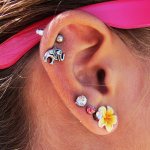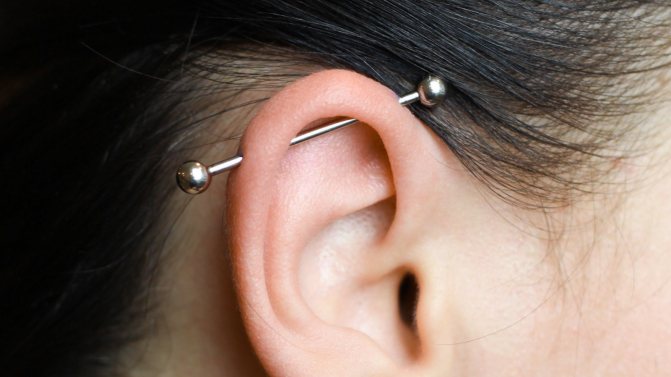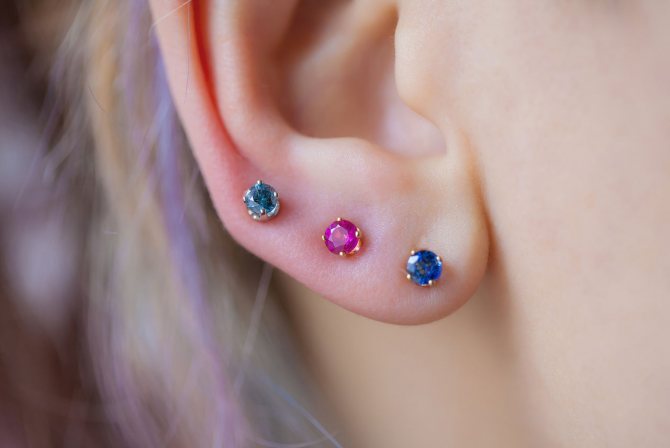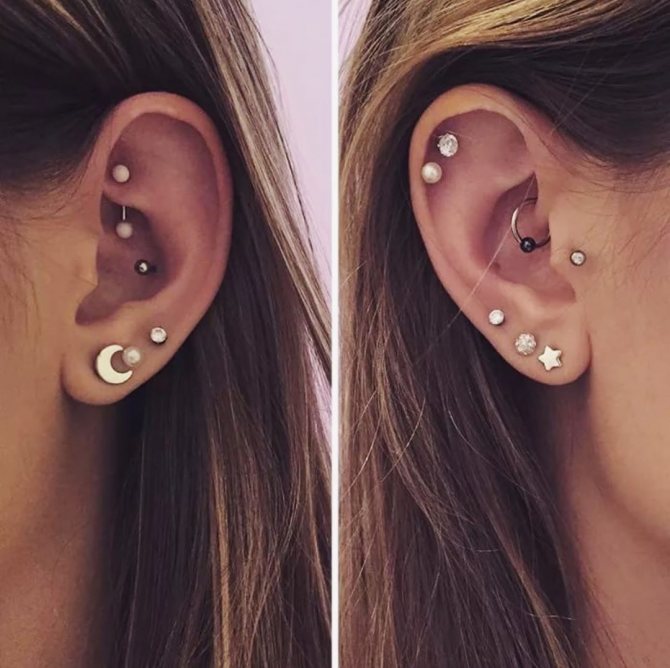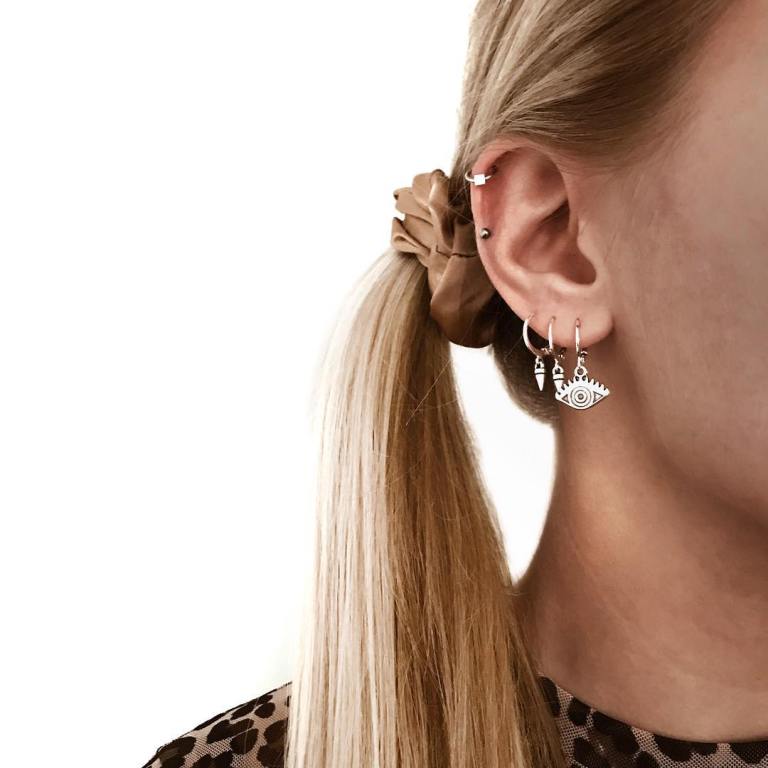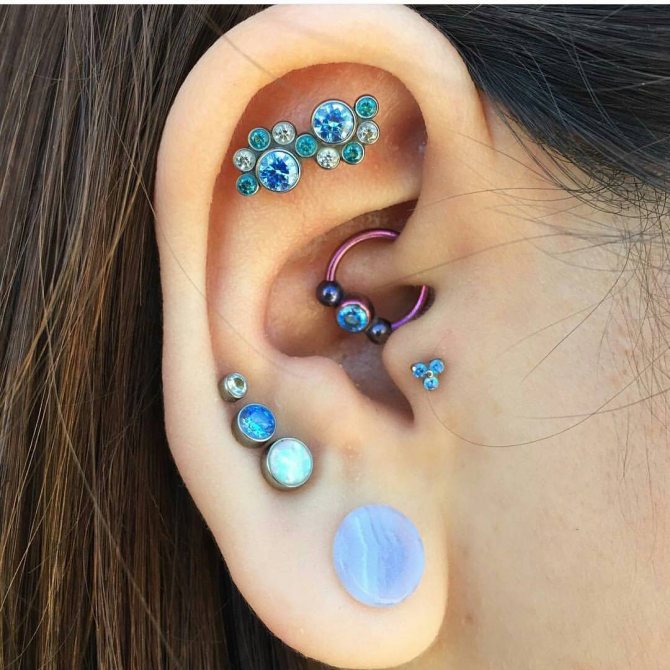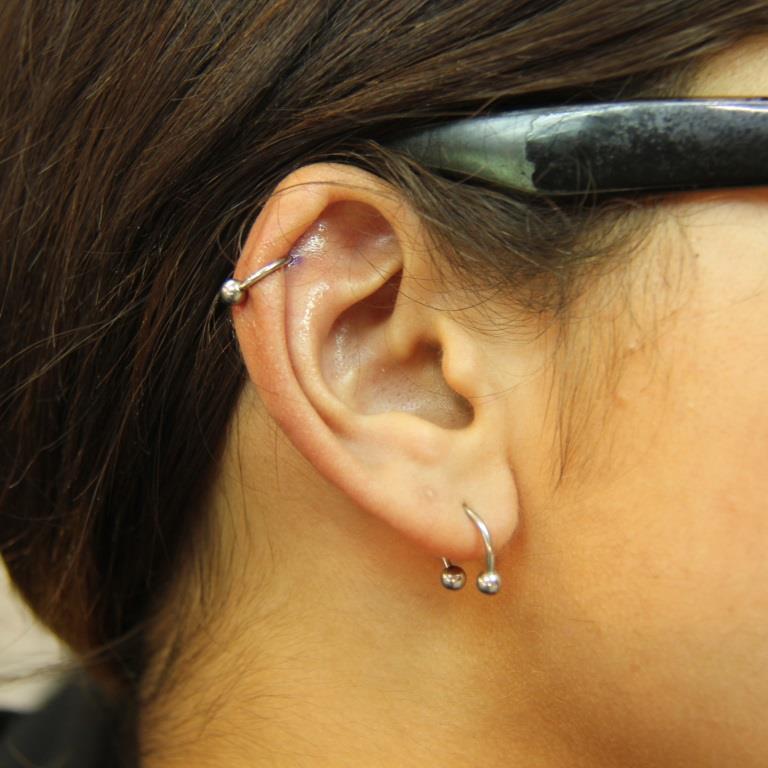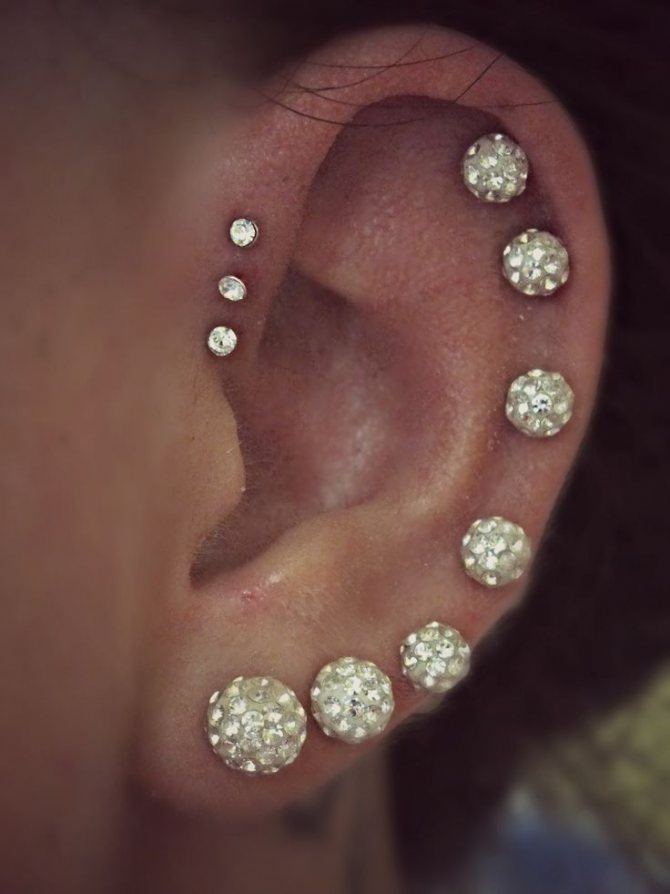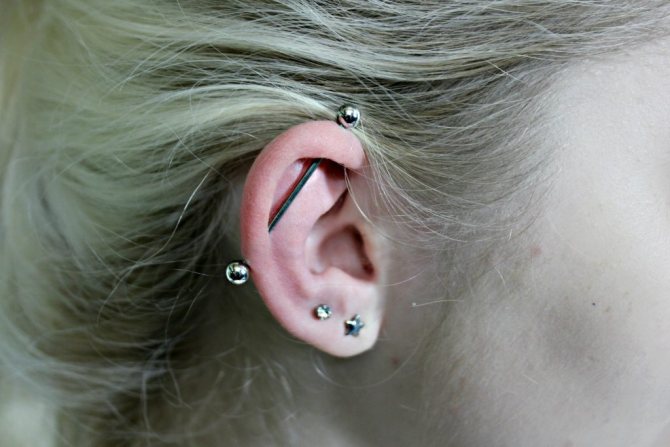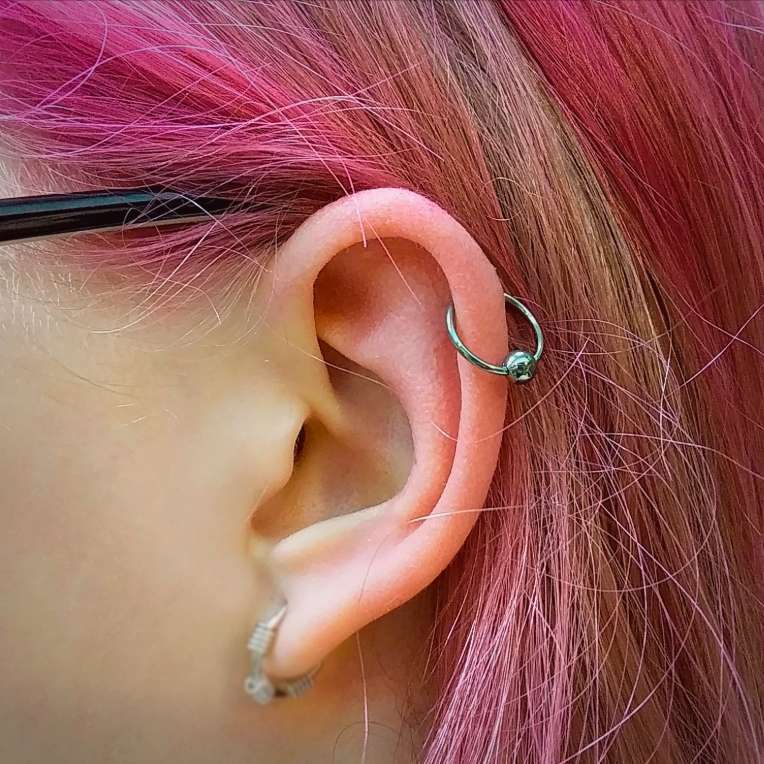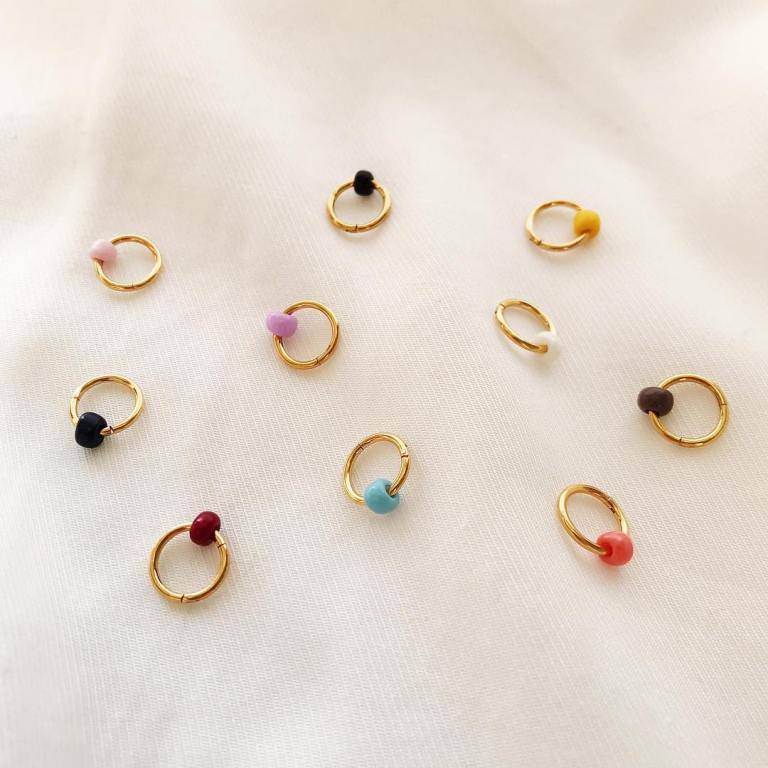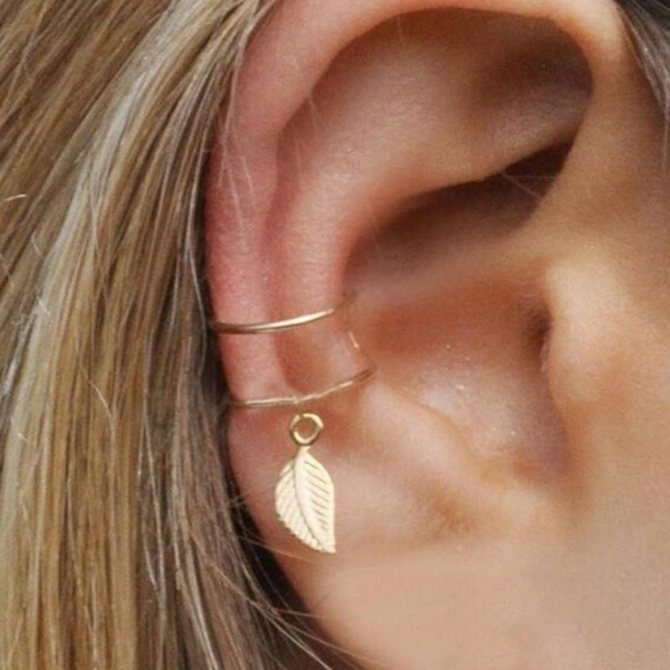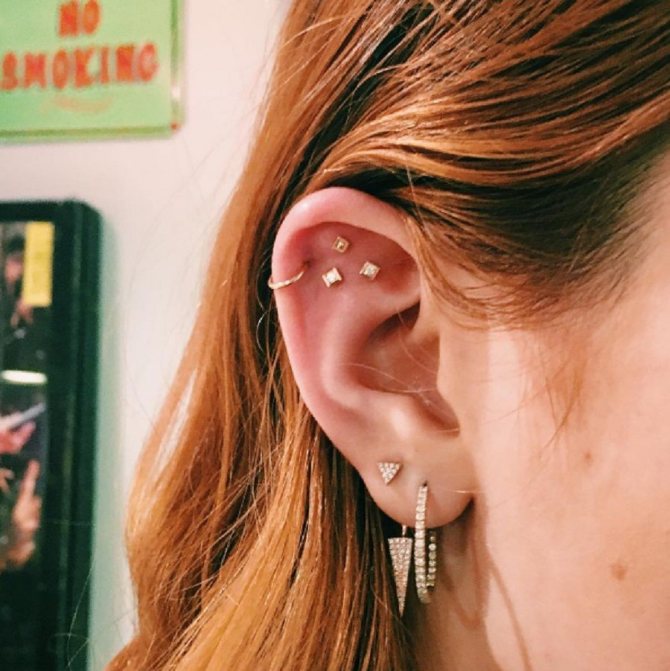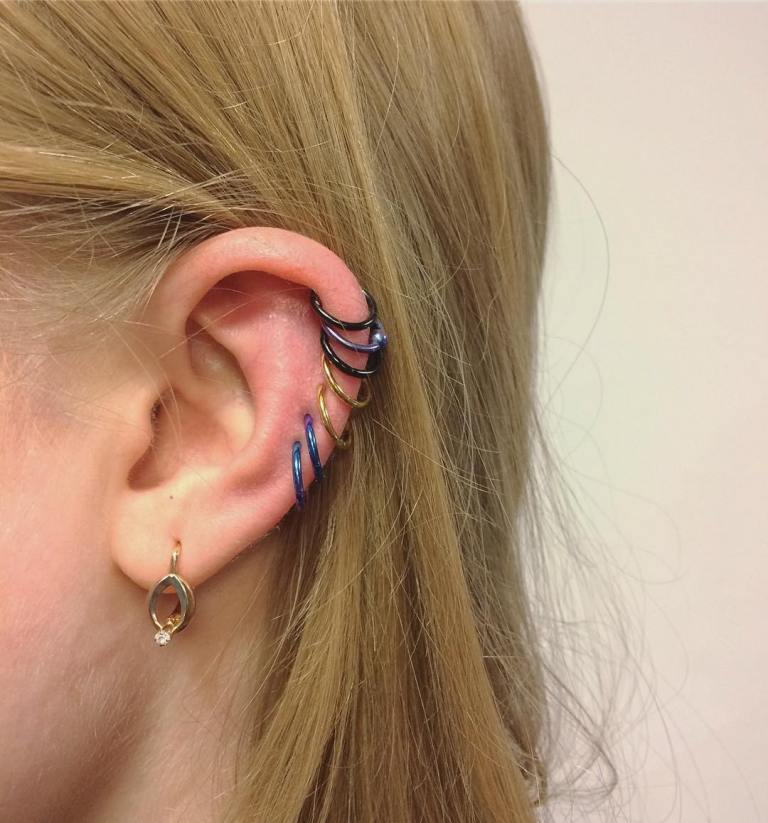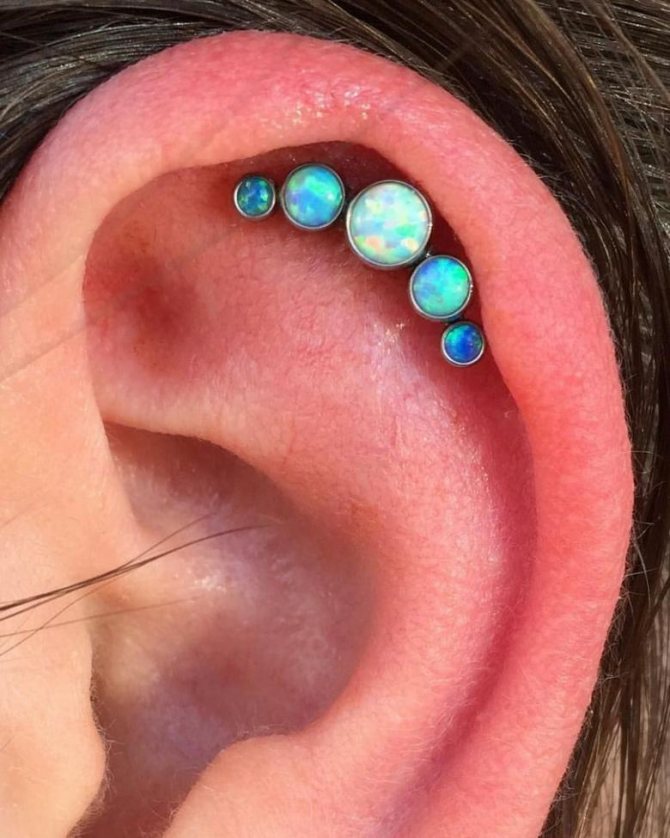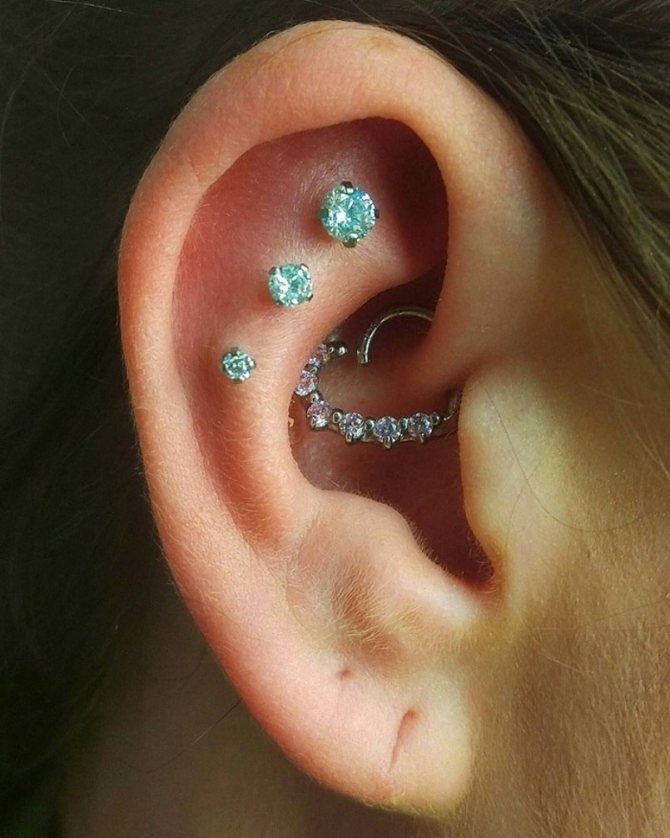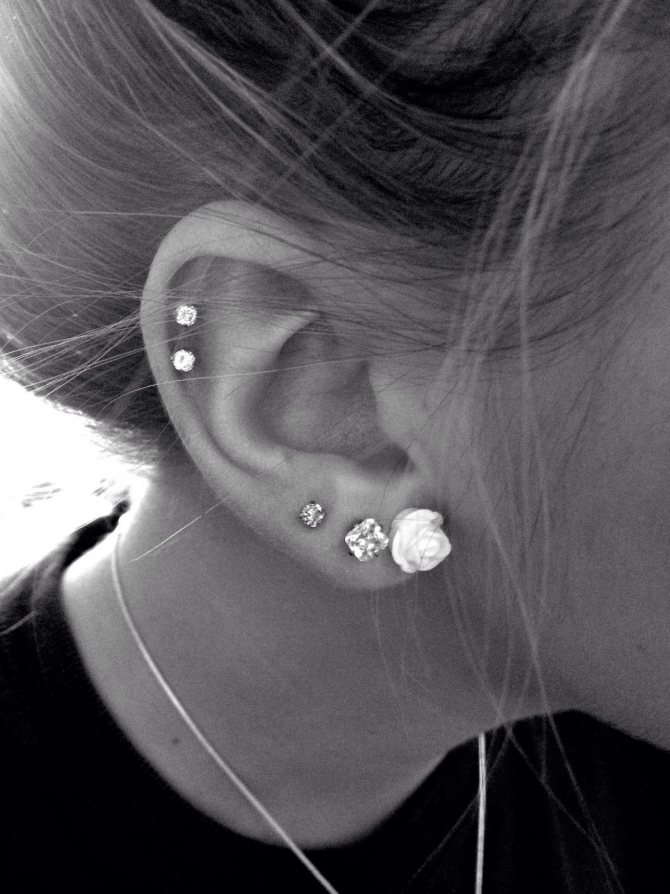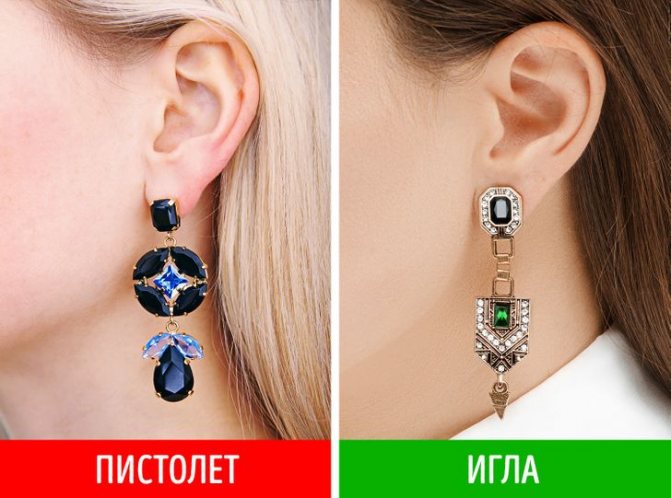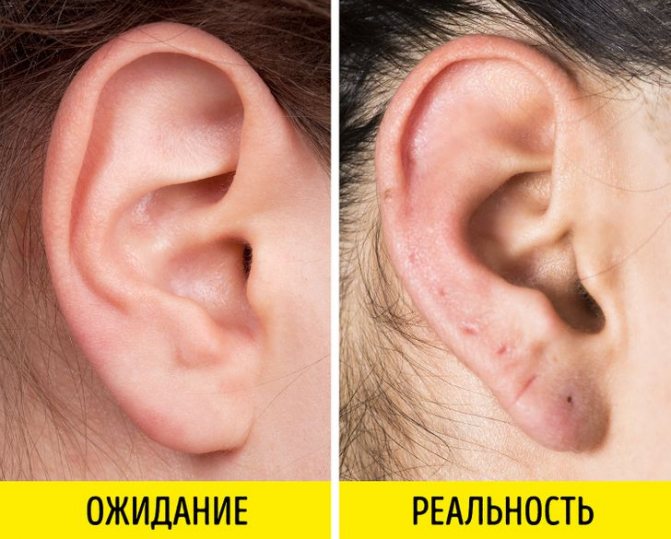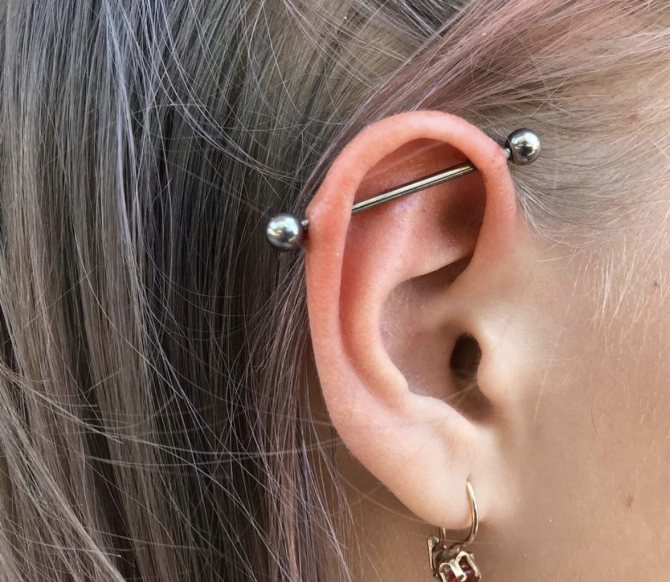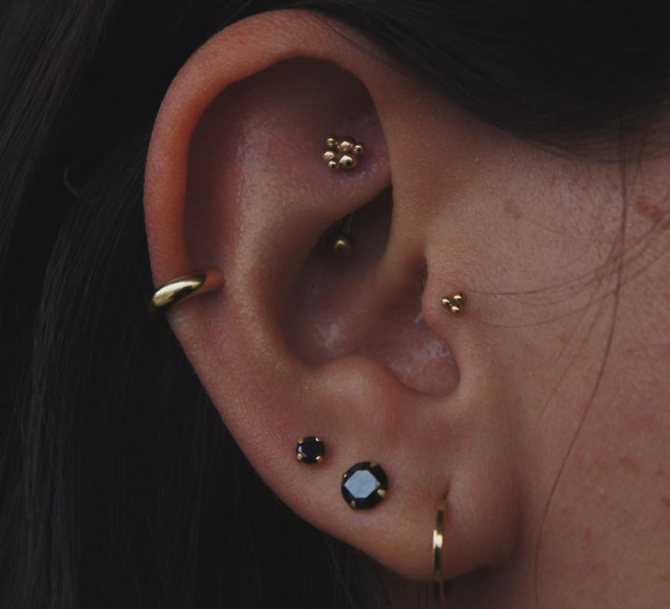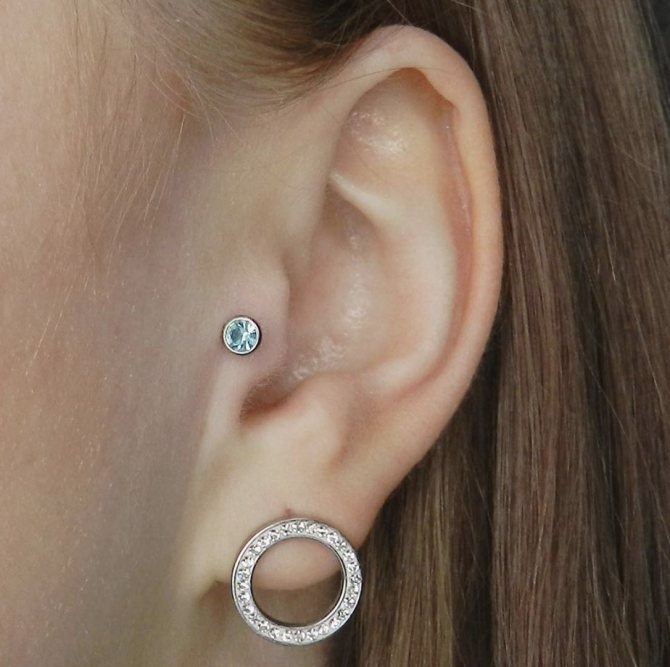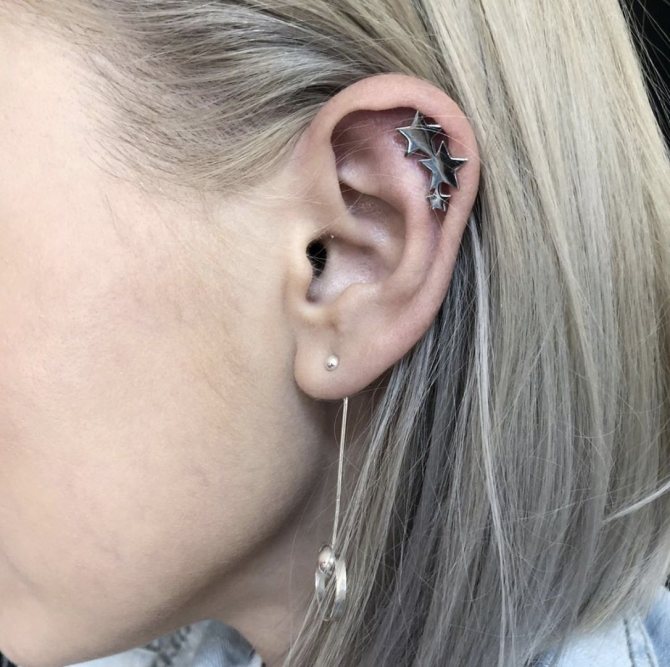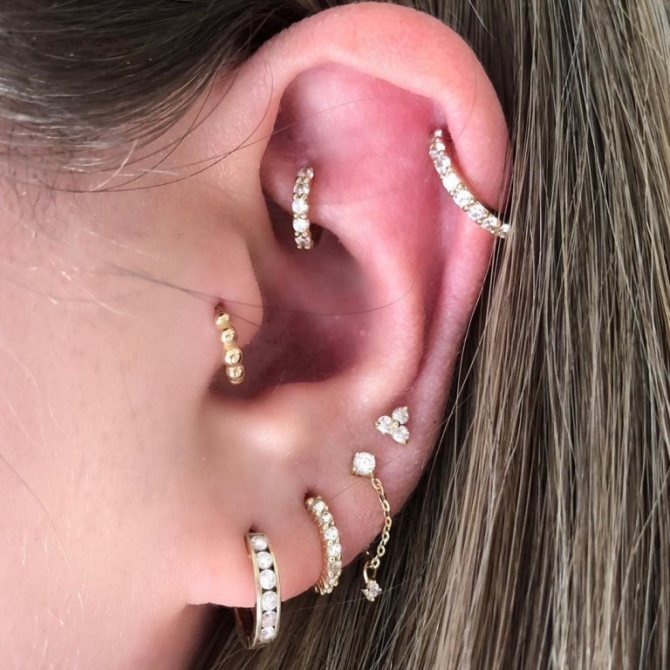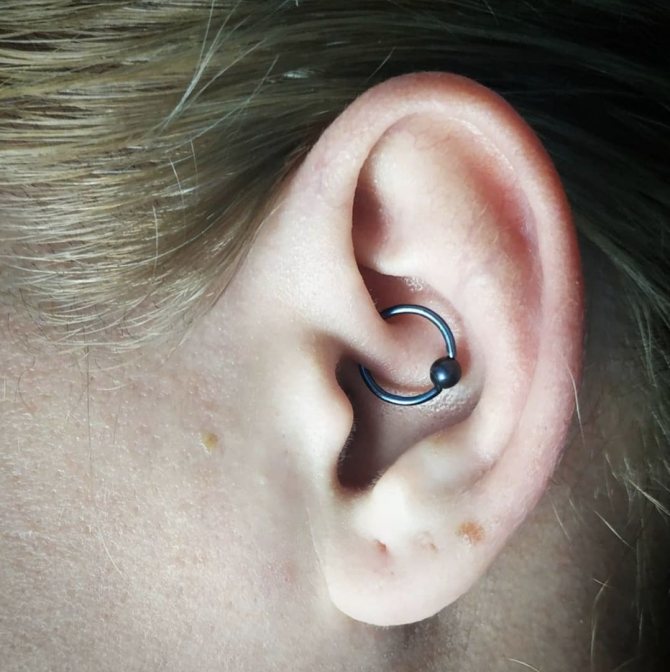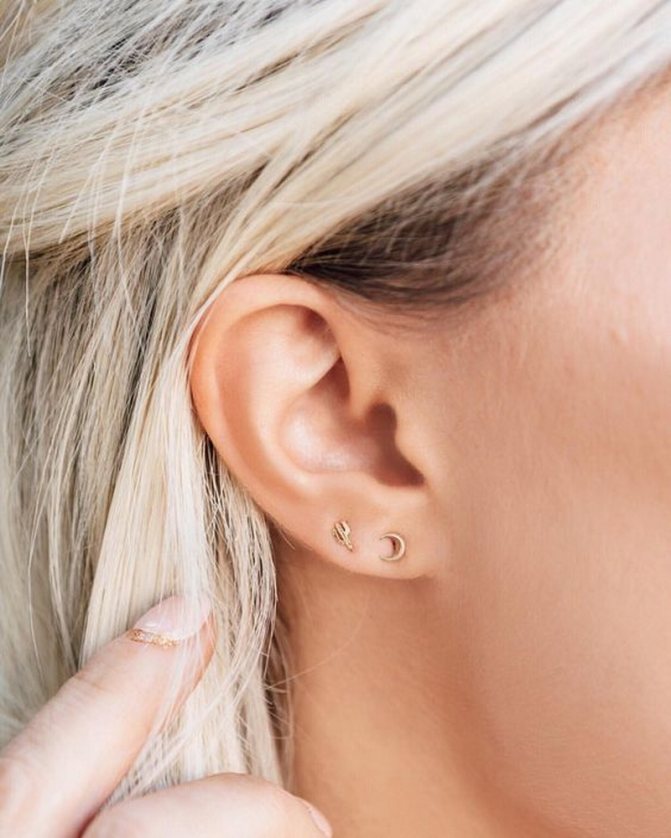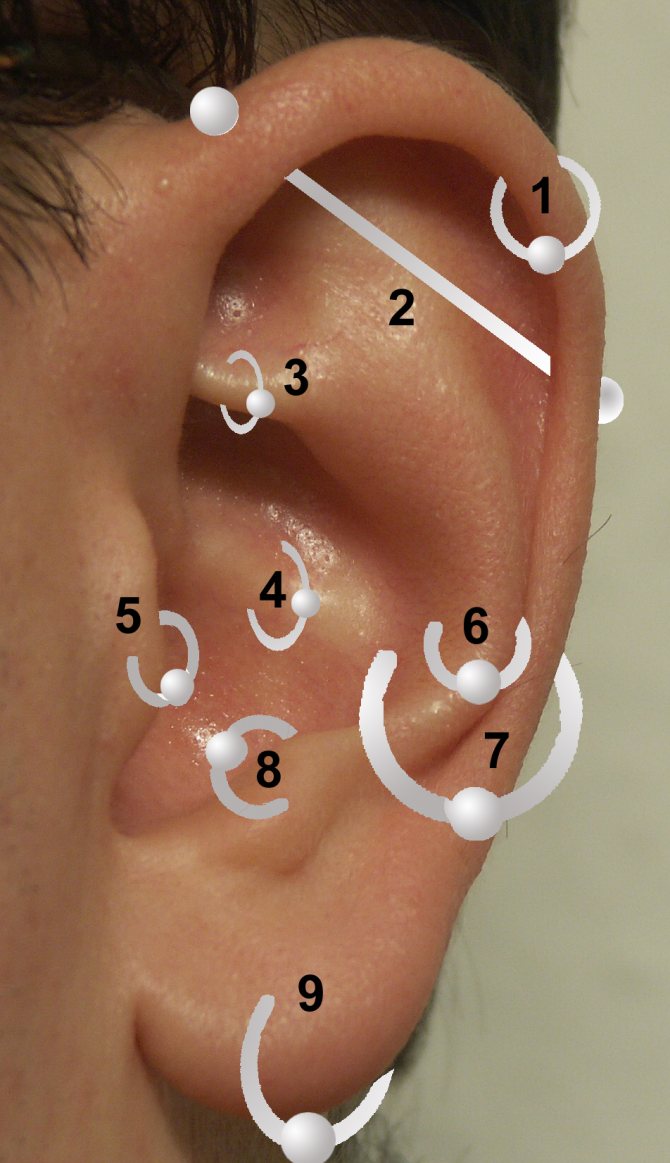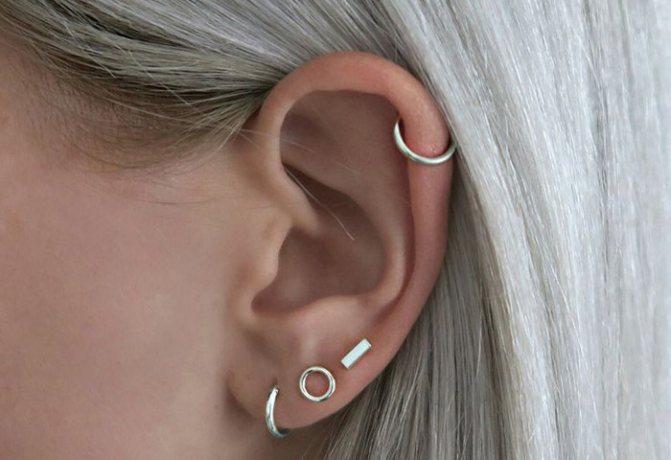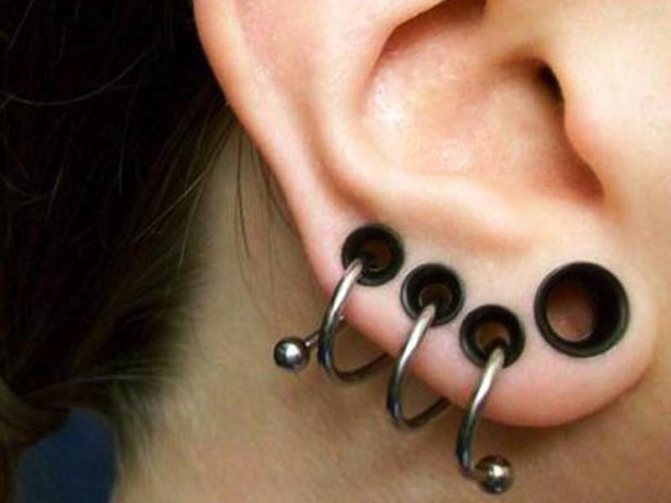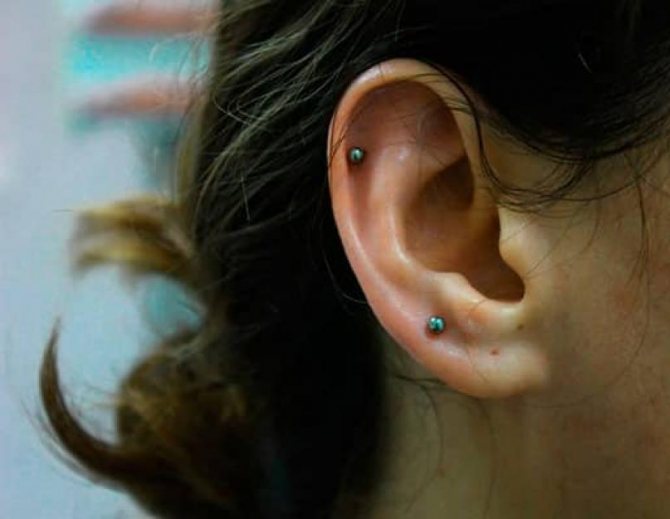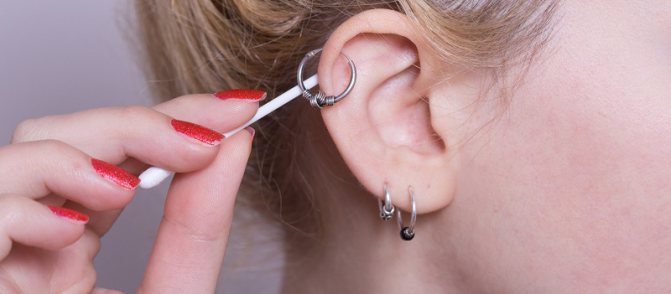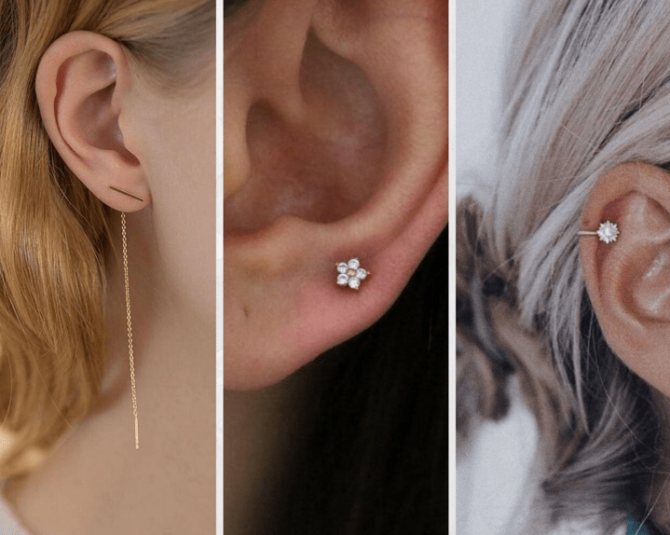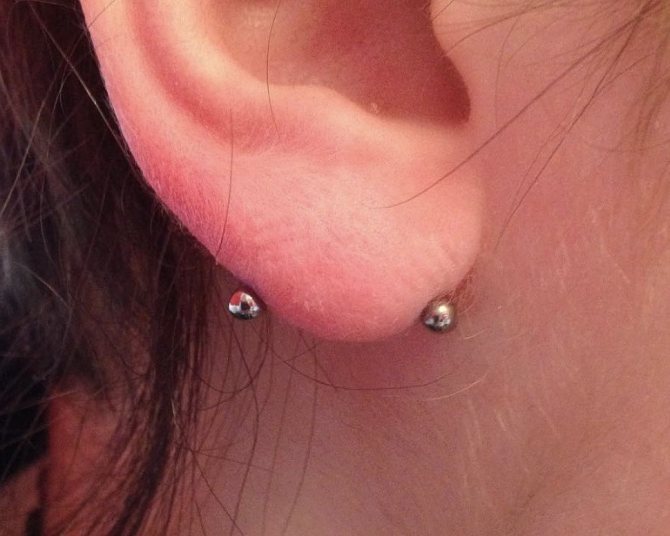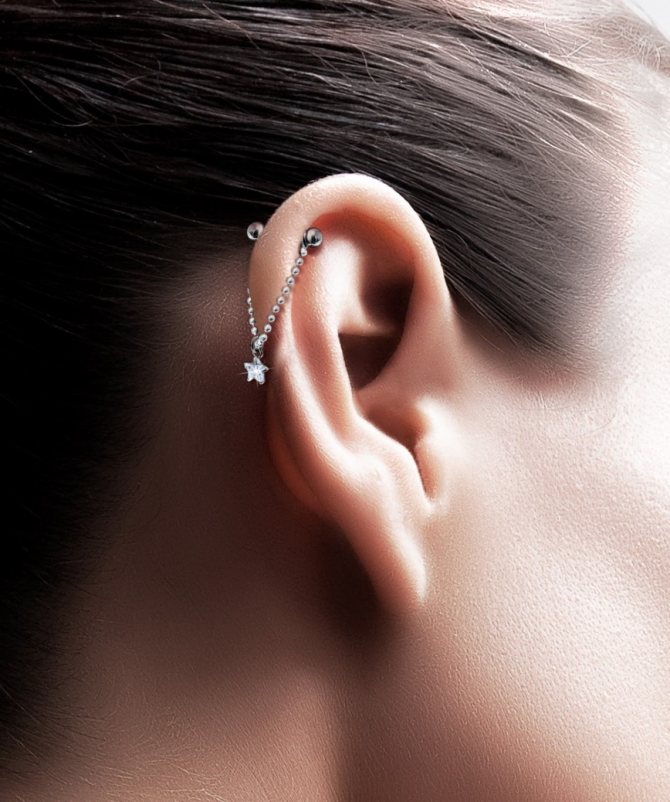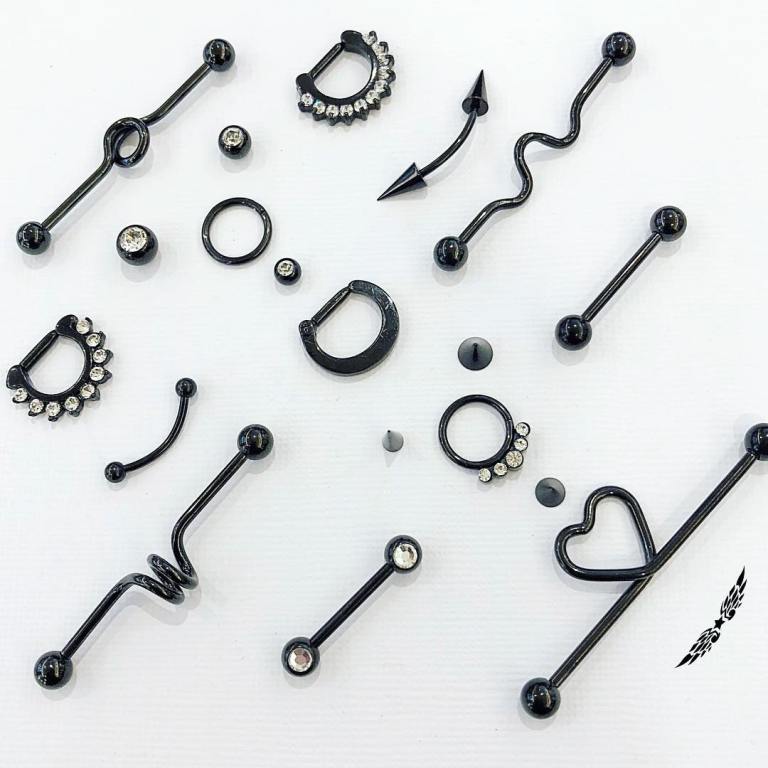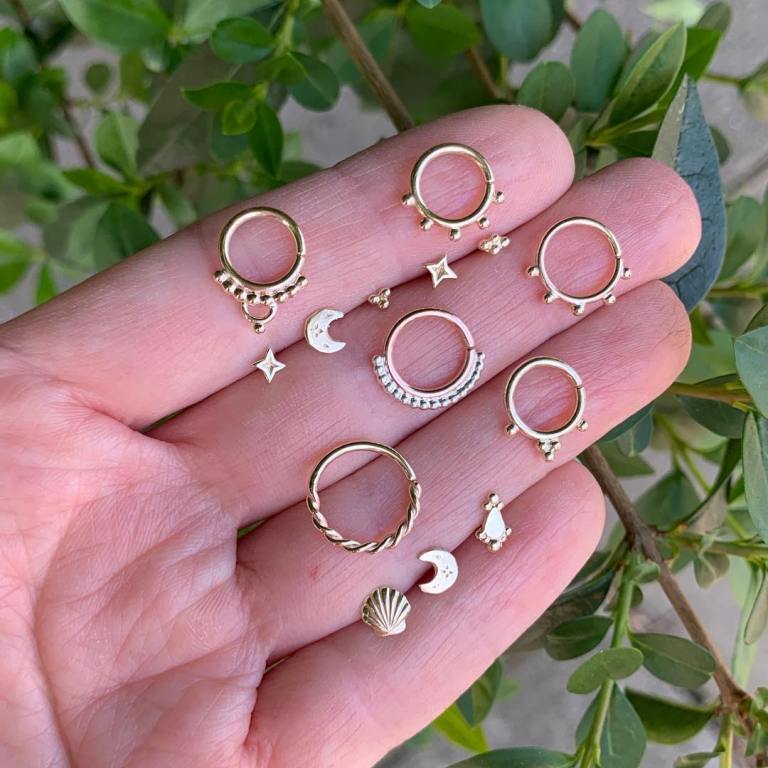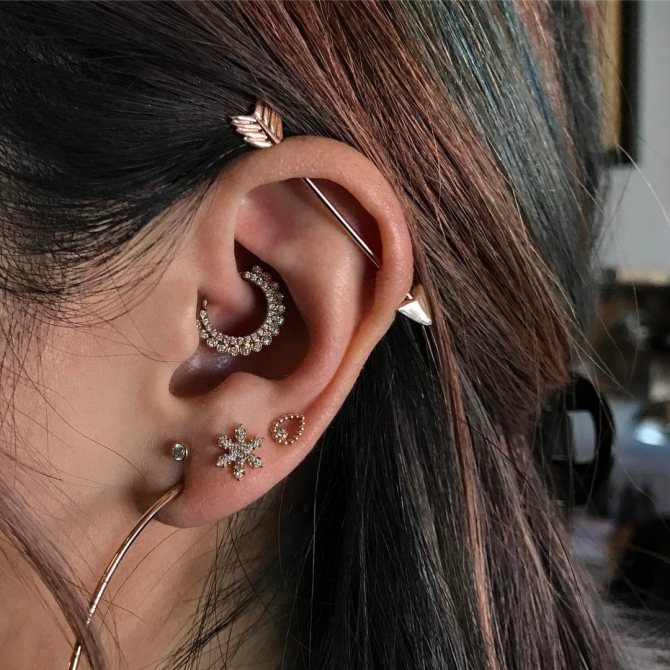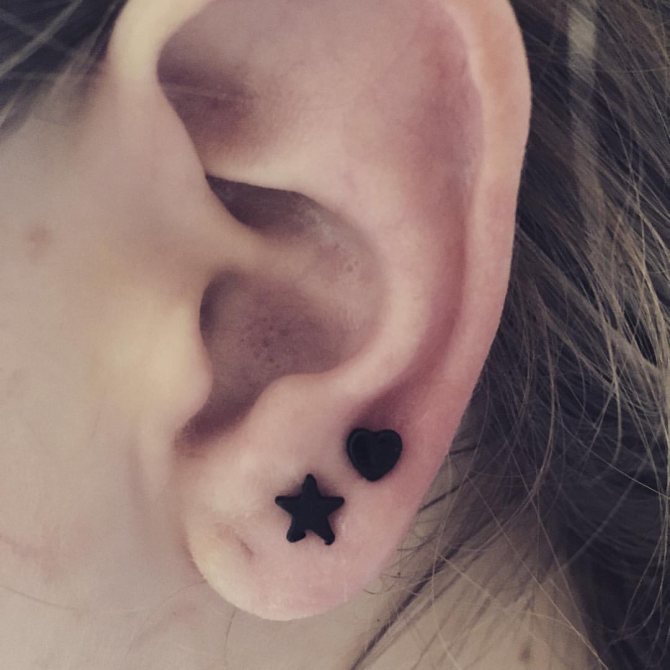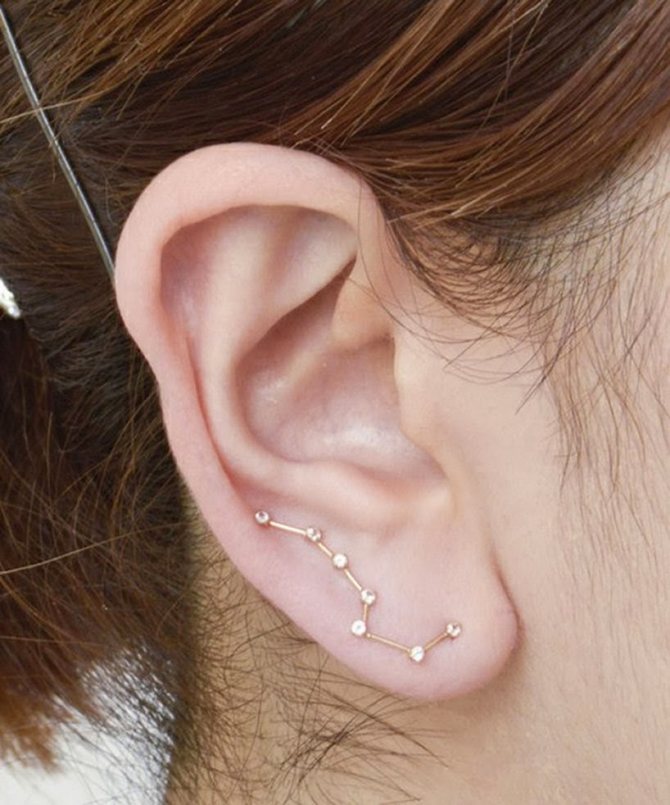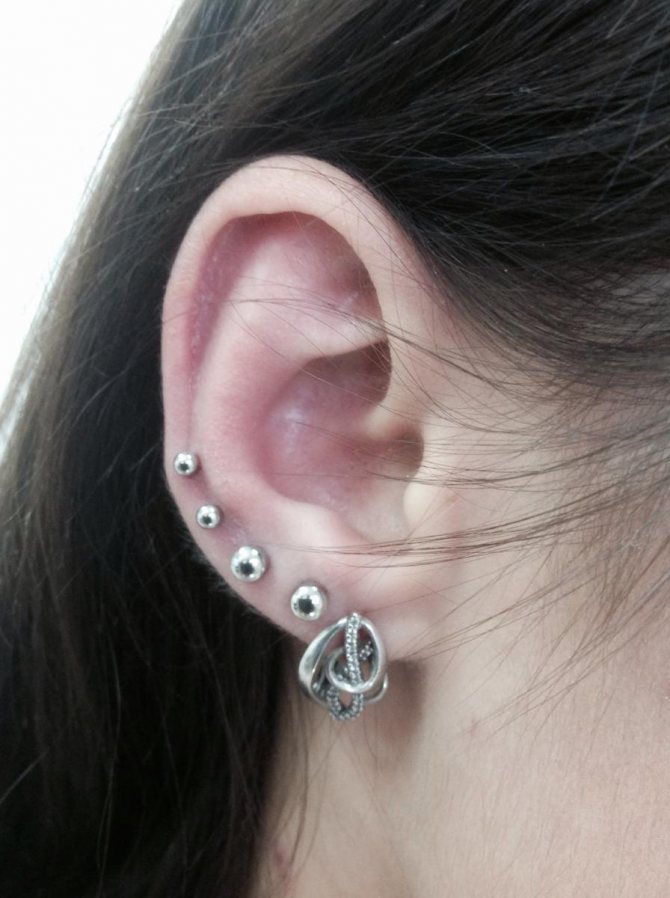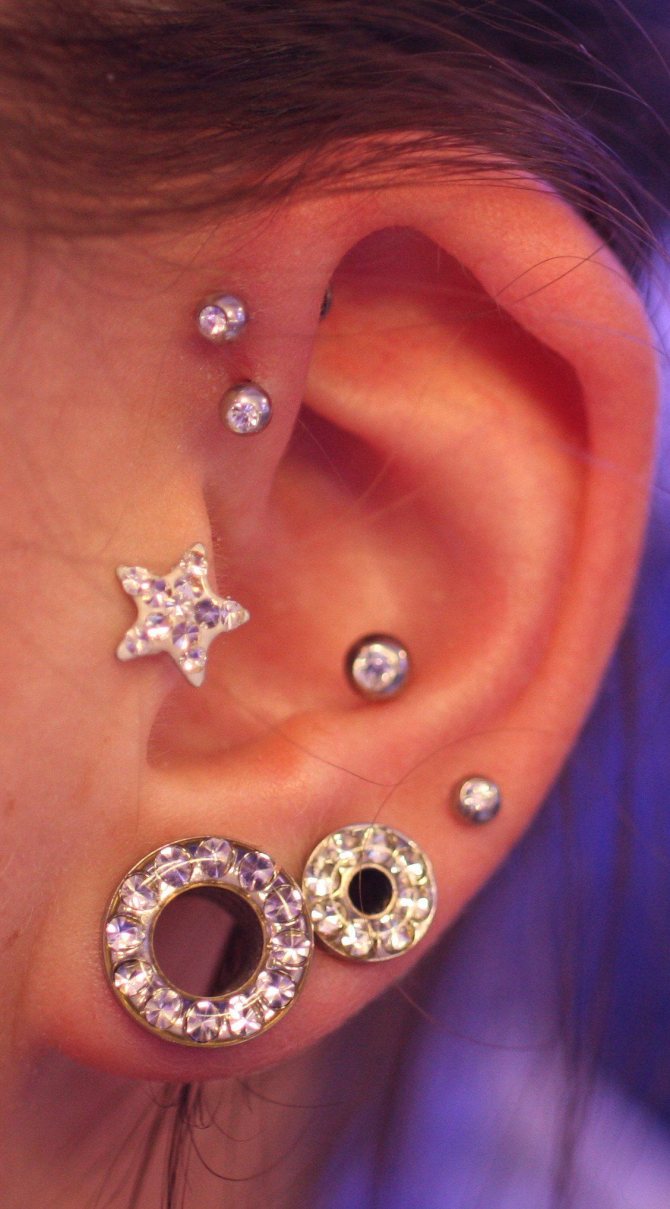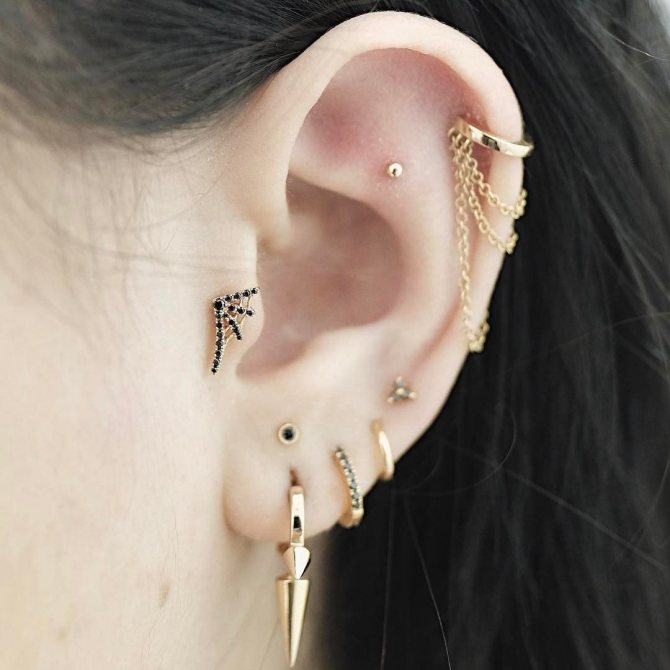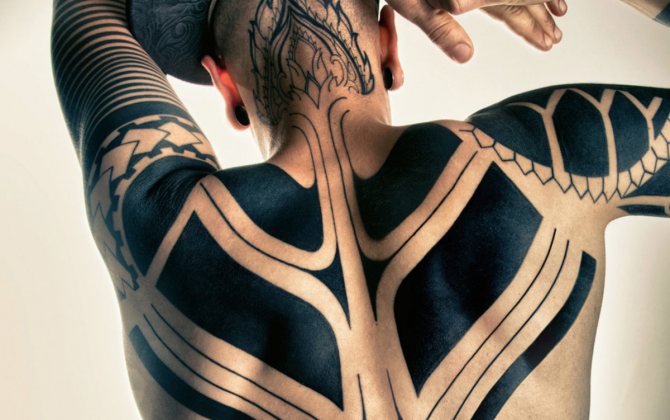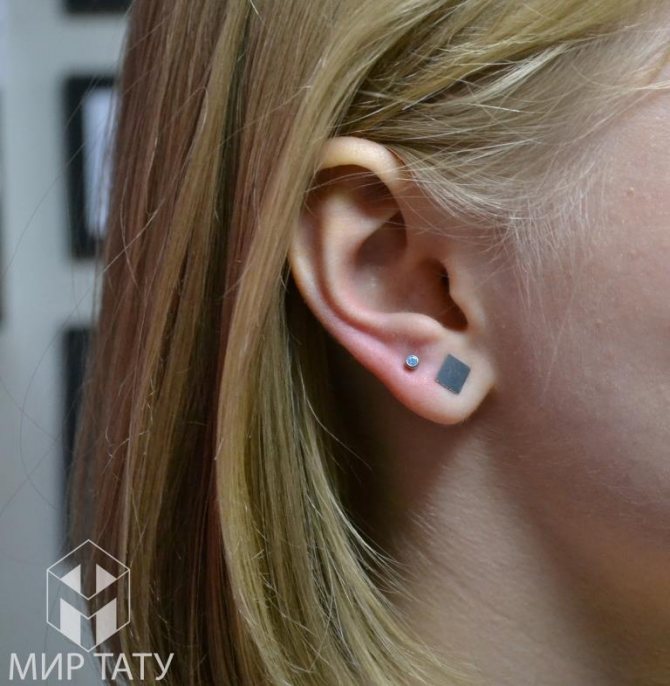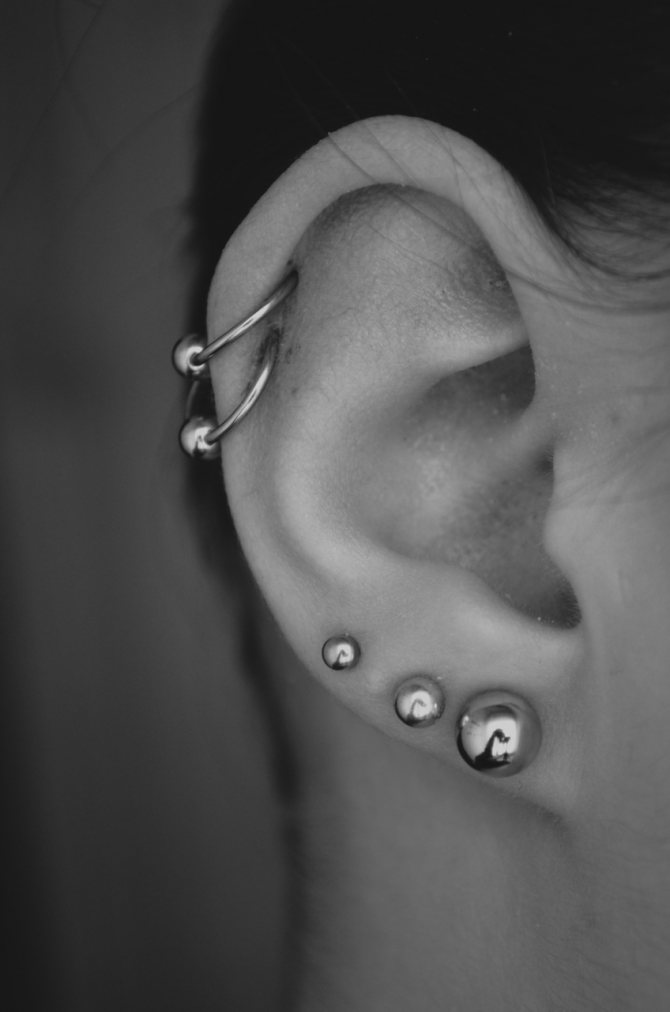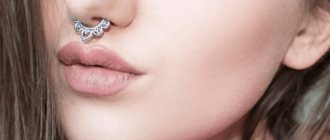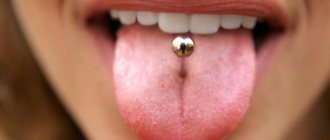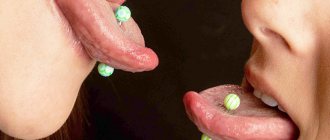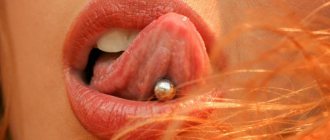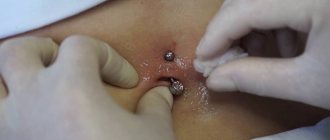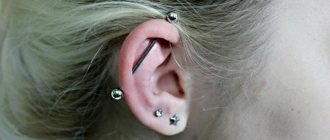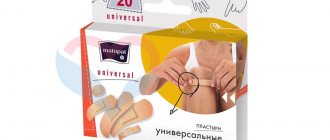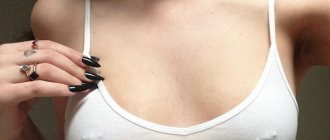What is a helix piercing?
Ear piercings have a special place in the piercing industry and are incredibly popular. There are many types of ear piercings, and one of them is chelix. Helix piercing what it looks like: a helix is a piercing of the upper cartilage of the ear. At the moment, this piercing is one of the most common, there is even a fake chelix piercing. The right place allows you to wear almost any piece of jewelry and create compositions of several piercings . In this article, we will tell you about all the nuances of helix ear piercing, carrying out the procedure and healing.
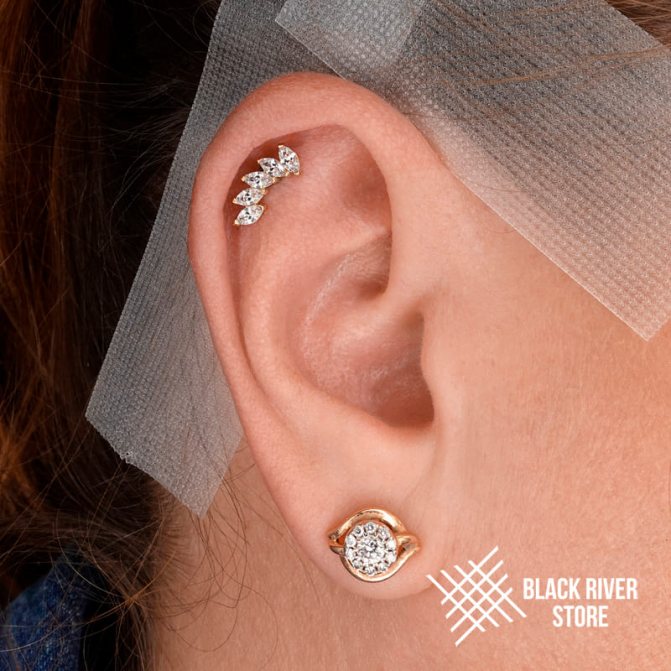
Price
The price of the piercing Helix depends on several factors: the prestige of the salon, the qualifications and experience of the master, the cost of jewelry. The cost of the piercing will cost you 1-1,5 thousand rubles, the purchase of jewelry in the salon will cost around 2 thousand rubles.


There are no difficulties in the piercing procedure and its care. The main thing, if there were complications, immediately go to the doctor. Yes, there you can remove the decoration, if the situation will require it, but health is more expensive.
How does the procedure go?
Although helix piercing is not considered technically complex, we do not advise to perform it at home. It is recommended to ask an experienced technician. The piercing procedure is as follows: the artist helps you choose the jewelry suitable for ear piercing Helix, then the jewelry and piercing tools are sterilized, while the artist treats your ear and makes a marking. When the tools are sterilized, the needle makes a through piercing in a selected place, using the tapper is inserted jewelry and a twist. After that, the puncture of the cartilage should be sealed with a plaster. After the procedure, the master will give recommendations on how to properly care for the helix piercing. If you are worried about whether it hurts to do helix piercing - the piercing itself takes literally a couple of seconds, so cartilage piercing is considered virtually painless. Helix piercing only hurts for a couple of days after the piercing.
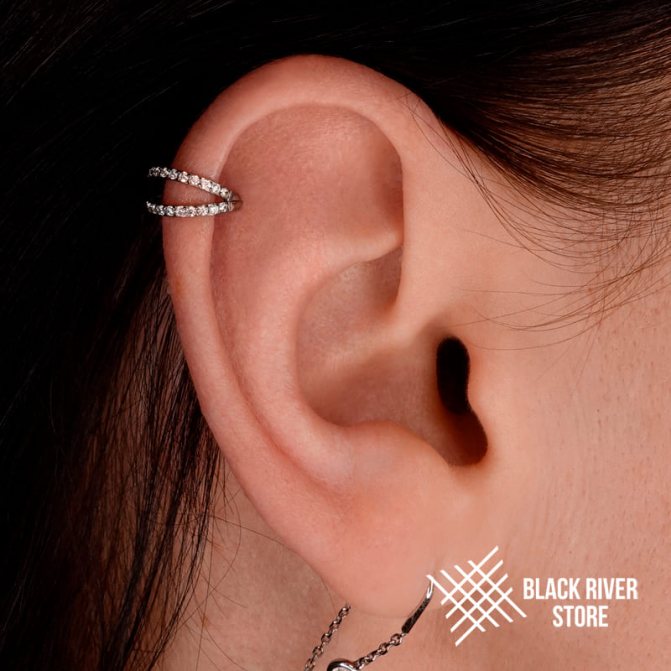

Procedure and complexity of the piercing
Before the piercing procedure, you need to familiarize yourself with the important rules of its implementation, as well as make sure there are no contraindications.
Helix (ear piercing in the upper arch region) is contraindicated in the following cases:
- Skin conditions (acute and chronic);
- cuts, scratches, damage to the skin;
- Acute respiratory diseases and inflammatory processes of the middle ear;
- Allergic reactions to metals;
- cardiovascular diseases;


- hypertension;
- gastrointestinal ulcers;
- benign neoplasms;
- diabetes mellitus;
- mental disorders;
- diseases associated with disorders of blood clotting;
- renal insufficiency;
- pregnancy and lactation period.
Before starting the procedure, it is necessary to choose a piece of jewelry to be fitted for initial wear. Before the procedure, the master must place the jewelry in a container with a solution for disinfection.
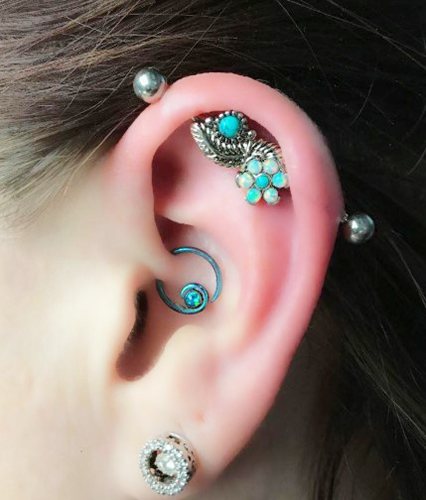

Jewelry for piercing provided in the salon is sterile and stored in individual packages. Often such jewelry is made of surgical steel, titanium or bioplastic. These materials are hypoallergenic, have a smooth surface and optimum size, promoting faster wound healing.
Sequence of ear puncture with a catheter:
- The puncture site is treated with a disinfectant solution.
- A mark is placed on the ear with a special marker.
- The ear is fixed with a special clip with a final opening.
- The technician pierces the ear with a catheter, observing a certain angle to form the correct location of the canal.
- The needle is removed and only the catheter is left in the hole.
- In order to insert the decoration, the labret rod is inserted into the tube of the catheter and, applying light pressure, gradually advancing it, pushing out the catheter.
- The master gives recommendations on how to care for the wound surface of the puncture.
Another, faster method, but one that brings more discomfort during healing, is the puncture with a gun.
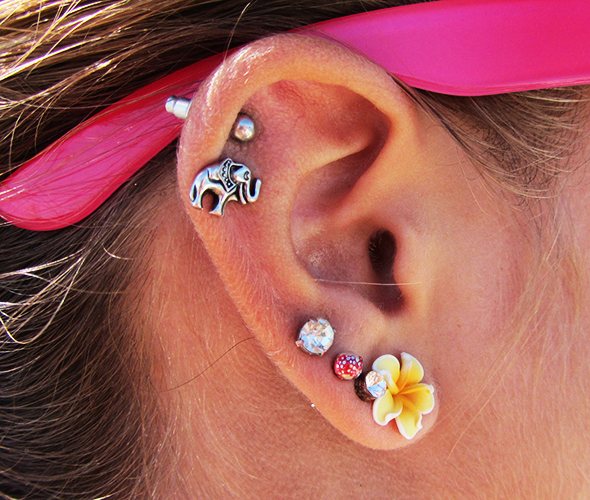

Helix (ear piercing that involves cartilage damage) is pierced with a disposable nail earring. The surface of the ear is treated with a disinfectant solution, and the earring removed from its sterile packaging is inserted into the gun. A mark is placed on the earlobe and a quick puncture is made.
Minuses of cartilage piercing with a gun:
- The earring, with which the piercing is made, has a small diameter, so it will be impossible to install a larger diameter jewelry, as the cartilage tissue is not stretched.
- The piercing jewelry has a short length, so if there is swelling, there may be pressure on the tissues of the earring, which can make the healing process much more difficult.
- If the piercing is done with a gun, the cartilage tissue can break down, which will cause tissue swelling and a long recovery period.
Proper care for helix piercing
Many people ask how long it takes to heal a chelix piercing - The complete formation of the canal takes 5-8 monthsThe healing does not end in 2-3 weeks, when "nothing hurts" as many people think. The first 10 days after the piercing are the most important, this is the period when it is extremely important not to traumatize and not to cling to your new Helix piercing. How do I take care of my helix? So, once you have acquired a new piercing, first of all you need to buy a treatment: you will need antiseptic in the form of a spray of miramistin or octenisept (the first two days treat twice a day, then once a day). Also PlastersTo protect the puncture from injuries and dirt, absolutely any plaster will do, the main thing is to have a soft lining on the jewelry on both sides. In case of trauma and inflammation to smear with Baneocin 2 times a day. For 2-4 weeks we have to exclude baths, saunas and hot bathsIn order not to steam the fresh piercing. Never twist or turn the jewelry, do not scrape off dried blood, do not use cotton swabs and cotton disks during the treatment of the puncture. After 2 to 3 weeks, a downsize (downsize) - replacement of the jewelry with a shorter one. You cannot sleep on the piercing until the downsize.
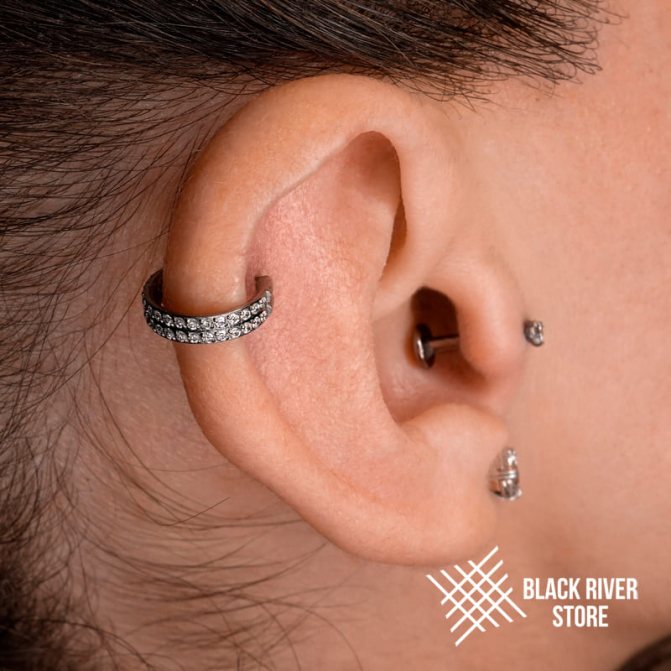

How long does the Helix heal?
According to experts, Helix ear piercing heals from 2 to 12 months. During this time, you should patiently wait for the pierced area to fully recover and not twist the jewelry in your ear.
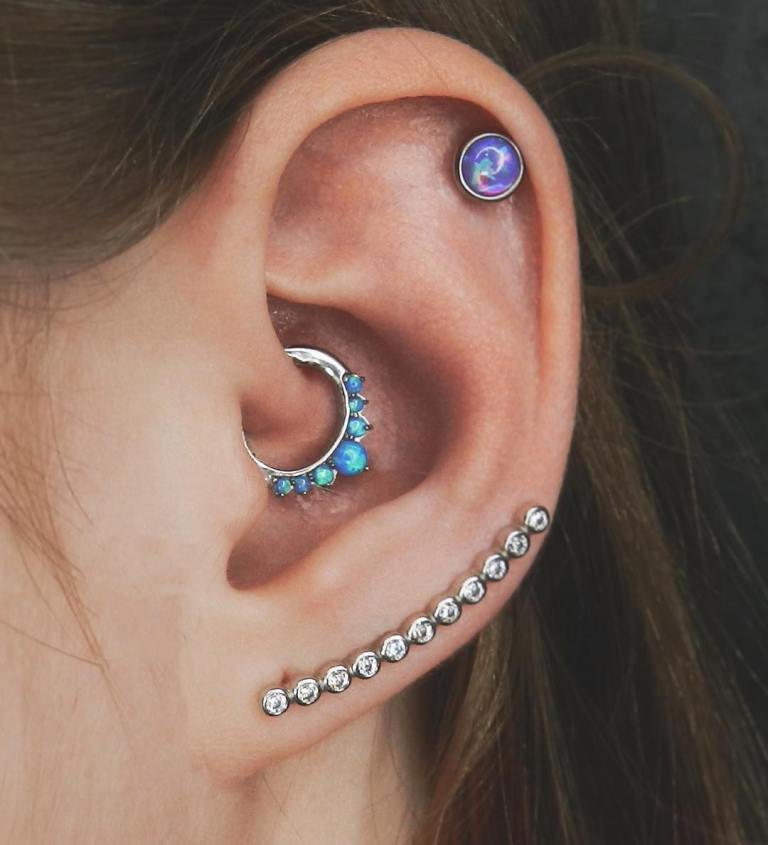

Although the pierced area may not be uncomfortable, there is a good chance that it is still not fully healed from the inside out. If you are unsure about the full recovery of the wound, it is best to consult a specialist who will check the puncture site.
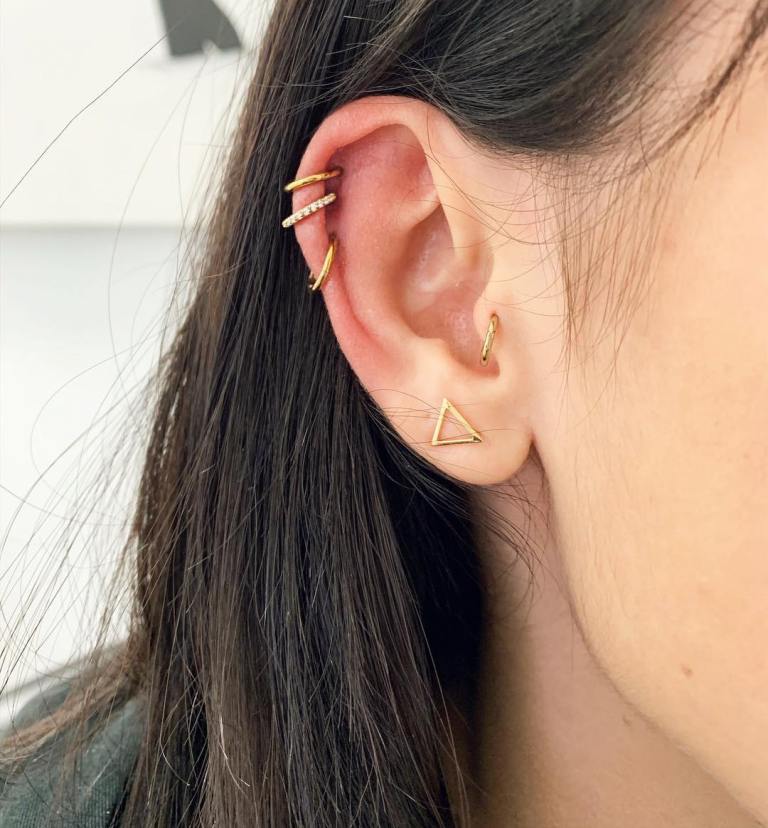

Some people who have had a Helix puncture have noted complete healing a couple of months after the procedure. Nevertheless, in some cases it took people about 12 months to get rid of the pain of the piercing.
Further care (one month later)
The primary healing has passed, but it is not the end of care. It is not advised to change the jewelry yourself.Often this is not done very carefully. Small but frequent traumatization can lead to severe damage and the healing process from the beginning. Do not wear jewelry of poor quality, the materials from which they are made can cause an allergic reaction. Several times a week treat your piercing (you already know how to treat a piercing helix). If you notice that after sleeping you feel discomfort in the puncture or the puncture is swollen, it is worth excluding sleeping on that side..
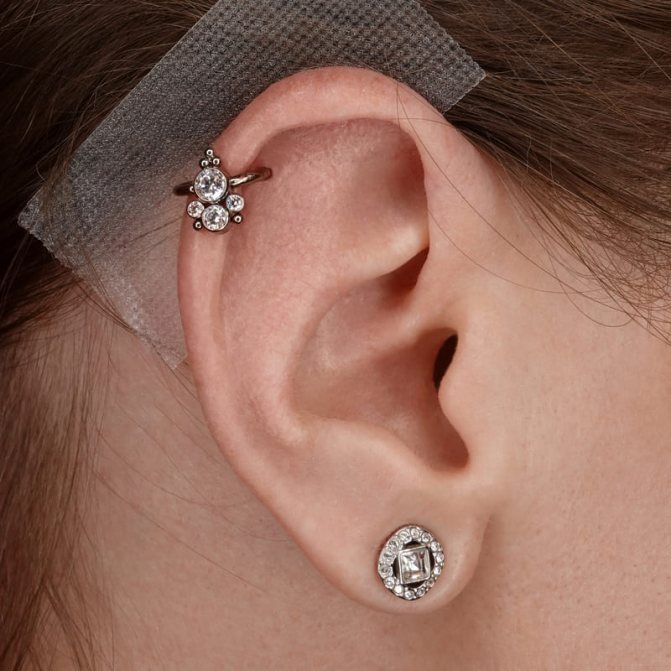

Question and Answer Block
If any doubts about lip piercings were left out of our discussion, we suggest review the answers of experts to the most common questions.
Does it hurt to do it?
It depends on many factors: the patient's pain threshold, the location of the piercing, the use of anesthetics, professionalism and experience of the master. For example, upper lip or chin piercings are the most unpleasant and require 100% use of lidocaine or any other analgesic. If you are very sensitive to pain, be sure to warn the master in advance and ask for local anesthesia.
How to remove?
If the hole is inflamed or festering, take a painkiller before removing the jewelry. Rinse your mouth with any antiseptic. Wash and dry your hands. If there are crusts on the puncture, put a cotton pad soaked in a strong salt solution (a tablespoon per glass of warm water). Bite the jewelry with your teeth to fix it in one place. Unscrew the tip. Unclench the teeth
Carefully remove the earring, taking care not to twist it, from the inside of the lip. If it is stuck, drip oil tocopherol or boiled olive oil on it.
Vaseline should not be used for this purpose. Rinse your mouth again with an antiseptic solution.
How to remove the swelling after the piercing?
Firstly, it is not a swelling, but a swelling. Secondly, the most correct option is to wait for this side effect to go away on its own. This usually happens within a week. If the swelling doesn't go away after that time, be sure to contact your handyman to avoid complications.
If you need to speed up the healing process, follow all the rules for the care of the pierced lip during the rehabilitation period. Once a day, apply an ice cube to the swollen area. You can buy lollipops with antiseptic:
- Septolete Neo;
- Falimint;
- Pharyngosept.
How to remove a piercing hole?
If you have decided that you no longer need a piercing, follow the recommendations of the professionals:
- Remove the jewelry.
- Lubricate the piercing twice a day with Contratubex and wipe it with salicylic acid lotion.
- Twice a week, prepare a scrub of oily sour cream and sea salt for this area.
- Once a week, massage the area with tocopherol oil extract instead of cream.
- If within six months the puncture has not grown back, the hole will have to be removed by plastic surgery. After microdermabrasion, the cosmetic surgeon will sew up the hole.
How long does it take to heal?
From 2 weeks to 2 months, depending on the rate of tissue regeneration (which varies from person to person) and the care of the puncture site.
What to treat it with?
The wound can be treated with:
- A mild saline solution;
- chlorhexidine;
- MIRAMISTIN;
- boric alcohol;
- salicylic alcohol;
- Calendula tincture;
- Propolis tincture.
Hydrogen peroxide is not recently recommended for such purposes, because there is an opinion that it causes the formation of scars in the future.
What should I do if my lip piercing is inflamed and festering?
Possible causes of festering: poor quality jewelry, lack of care for the piercing, the wrong size. What to do if the inflammation has just begun and is not yet strong:
- Remove the jewelry. Examine it for: extra space of about 2 mm on each side, polish (it can be spoiled by the stamp of the sample). If necessary, replace the earring.
- Put a cotton pad with Vishnevsky ointment on the puncture for half an hour.
- Wash the hole with soap and water. Dry with a paper towel.
- Drip into the puncture with MIRAMISTIN. Dampen the jewelry with the same and return it to its place.
- Apply Actovegin (Solcoseryl, Baneocin or Contraktubex) in a thin layer.
- Dressings are not necessary.
- Wash daily with furacilin solution: 1 tablet per 100 ml of warm water. Draw it into a syringe and inject it into the puncture hole.
New Tattoo inscriptions: the best ideas with meaning
If the situation is neglected, the wound is very festering, the decoration can not be removed. It is necessary to fill a syringe with warm boiled water and pass it through the hole. Spit, rinse mouth with antibacterial lotion. Contact your doctor. Antibiotics will most likely be prescribed.
Lip piercing - this is, no doubt, very stylish, modern and seductive. But in pursuit of the trends of the time and the ever-slipping fashion we shouldn't forget about our health. Weigh the pros and cons before the procedure, to avoid bitter disappointment because of scarred appearance.
https://youtube.com/watch?v=om-tJcLkZ3g
What Not to Do? Common mistakes
The most common mistakethat we inherited from our grandparents' generation, is to "twist and turn the jewelry. No, you can't do that! Every time you turn your jewelry, the fragile cells that your body created during the healing process are destroyed, and everything starts all over again. And sometimes even worse: after a severe trauma, the helix piercing becomes inflamed, then there is another trauma, then it's no longer just inflammation, but granuloma, which takes a long time to heal and visually does not look very aesthetically pleasing. The second common mistake - Sleeping on a fresh puncture before downsizing. In this case, there is a high risk of canal migration, which means the jewelry will stand unevenly and heal poorly. Mistake number three: Forgetting to change the ornament to a shorter one. Yes, in this case there will also be migration of the canal (the jewelry will not stand smoothly). Remember that helix piercing care is a responsible matter, but if you follow all the rules, the healing of your helix piercing will go without any problems
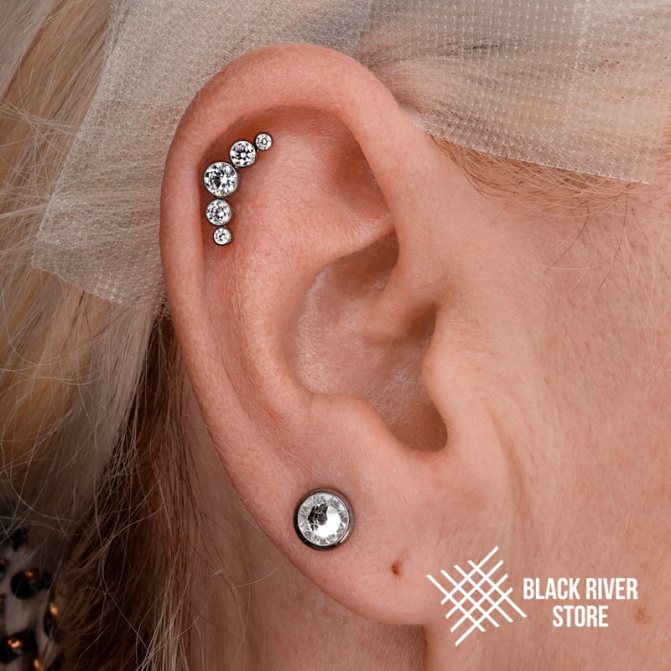

Jewelry options
The ideal jewelry is a labret 1.2 mm in diameter, a curved barbell, a ring and other earrings, depending on a person's personal preference.
What kind of jewelry is suitable for such piercings?
The main principle of choosing jewelry is the material. The jewelry should be made of titaniumOther metals like silver, gold and medical steel will not work because of the impurities in the composition, they are oxidized in the body and cause a lot of unpleasant feelings, up to the rejection. For primary healing, a direct jewelry (labret) with a twist is placed in the helix piercing. The choice of links is very great, it can be round links with cubic zirconia or opals, titanium links or inlays of different stones, as well as clusters (jewelry that consists of several parts connected to each other) look beautiful in Helix. The ring can be placed only after 3 months, but if during this period there were injuries and inflammations, the period is extended. Many do not stop at one piercing and complement it with a whole composition: perfectly combined between a piercing helix and tragus, or helix and deis.
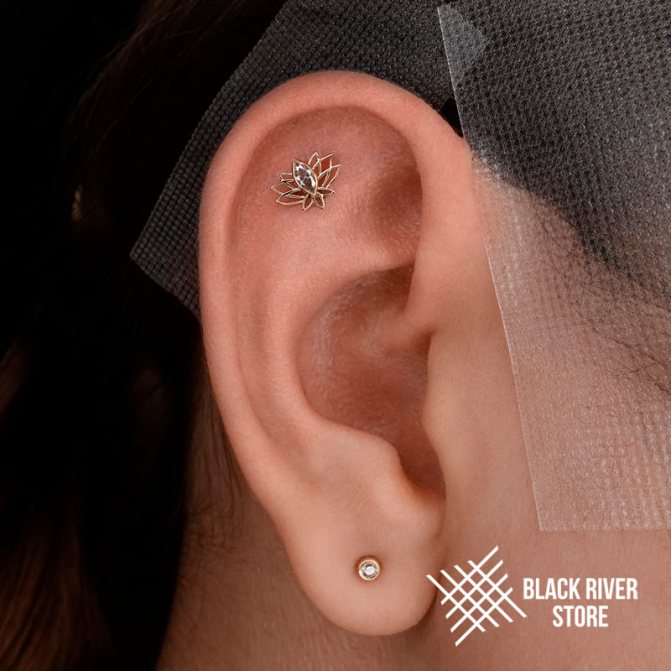

Infections and complications
Piercing Helix, it is an intervention in the body, so various complications can arise. Mostly it happens because of an irresponsible approach to the care of the wound. Swelling, which passes within 2-3 days, is considered normal.
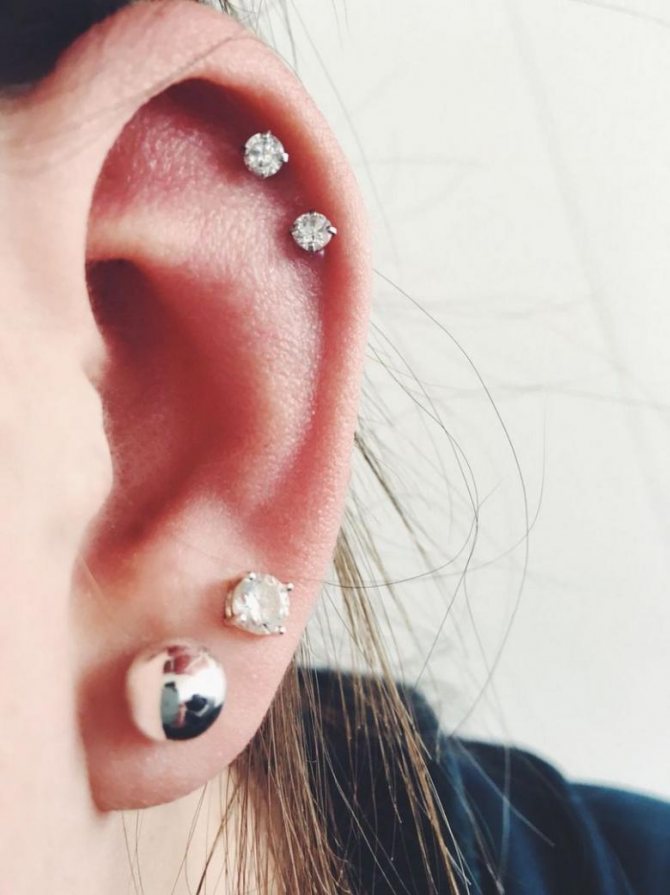

Possible consequences:
- If the swelling lasts for more than 3 days, it means that inflammation has started in the puncture site. It is necessary to treat the puncture site with antiseptic and conduct light massage of the injured area. If pus appears, apply aloe. If there is a strong tooth and burning in the puncture area, it is necessary to go to the hospital immediately.
- High temperature and fever. These symptoms occur if you delay treating the inflammation that has started.
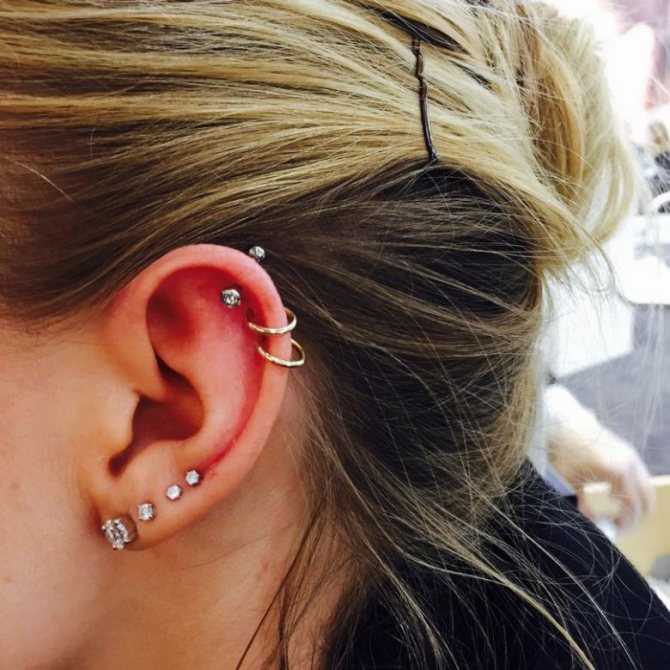

The main causes of complications:
- Poor wound care.
- Sleeping or lying on the damaged ear for long periods of time.
- Manipulation with jewelry until the piercing is completely healed.
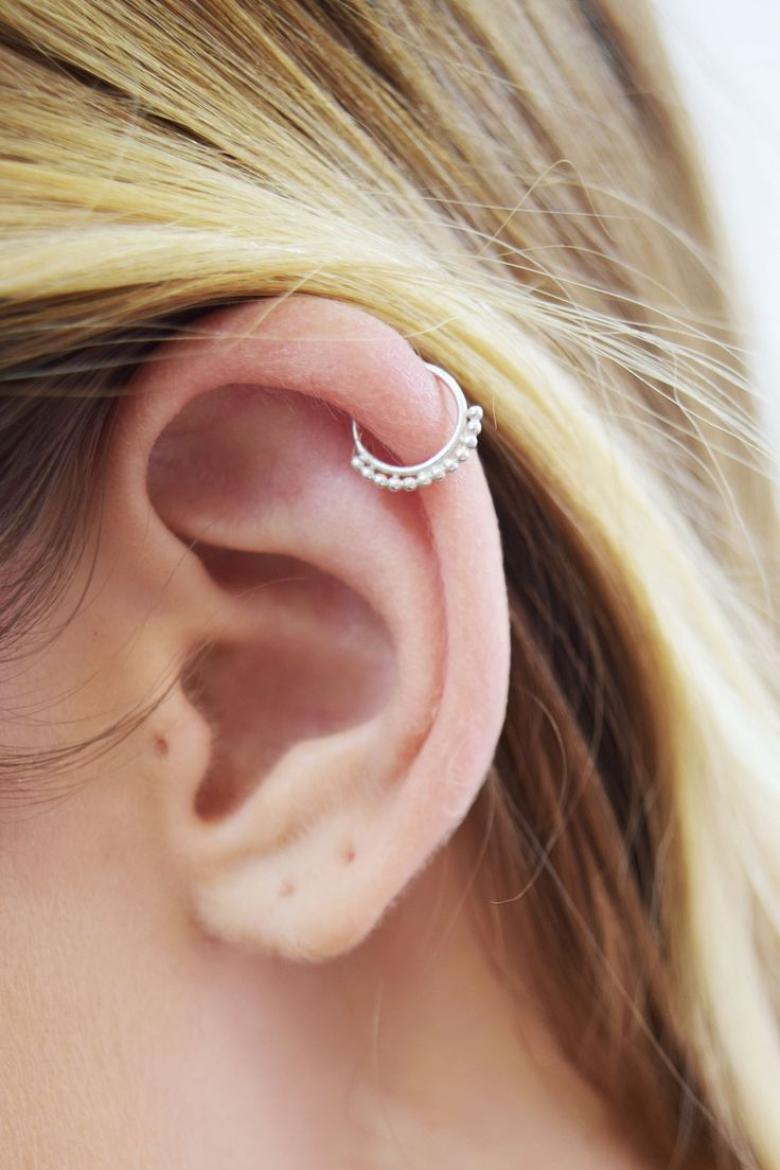

Types of piercings
There are different types of chelix:
- Plain: classic punctures in close proximity to the cartilage at the top of the ears.
- Flat: holes along the upper curve of the cartilage with a slight distance from the edge. This piercing allows you to wear flat earrings (carnations, etc.).
- Reverse: the piercings are made closer to the face, almost above the tragus.
- Double or triple: this helix involves several piercings at once, lined up in a single line.
Earlobe piercing.
One of the most common types, which is easy to perform and the safest. Earlobe piercing is done with a gun or needle. Due to the absence of cartilage and important points in this area, earlobe piercing heals quickly and very rarely rejects the jewelry material.
Lobe piercing is most often done without anesthesia, as it is the area with the least sensitivity. Even a small child can withstand a second unpleasant sensation, which is why it is recommended to pierce the ears of children between the ages of 3 and 5.
What is a cartilage piercing
Helix is a great solution for girls who already have several piercings in the ears. This kind of piercing has a spectacular look, and if necessary, the piercings are conveniently covered with hair. Helix is the best option for people who like to experiment with images and the jewelry used.
If you consider human anatomy, helixes are the curved cartilaginous rims of the outer ears. To insert gold jewelry, punctures can be made anywhere on these outer rims. Often girls choose to make 2-3 piercings next to each other, placing them in a single line along the curve of the auricle. Helix is considered a subspecies of cartilage (cartilage piercing). Its main distinctive feature is the possibility of using different forms of earrings - from very small to quite large.
Problems and post-inflammatory scars
One of the main problems of long-term healing and inflammation is contact with dirty hands, objects, mechanical damage, which results in microcracks with subsequent bleeding and ingress of foreign microorganisms from the external environment into the wound. Also, viral and infectious diseases, especially of the upper respiratory tract, mainly otitis, suffered earlier after the procedure can be the cause of problems with regeneration. Weakened immunity can cause the foreign body to take root.
Remember that the formation of unsightly and massive scars is a matter of time. Many features are necessary for conditions for their rapid growth: lack of hygiene, improper handling, constant mechanical contact.
At the first suspicion, be sure to contact your specialist to find out the etiology of the scar and change your usual care to a more intensive treatment. Either your handyman will remove the jewelry and you will have to heal the inflamed capsule.
The problem of any serious scarring can always be avoided by following all the rules of asepsis and care, remember that!
Inflammation and rejection
The main causes of any inflammatory medium and acute processes with the resulting purulent-septic, arise after mechanical injuries, inappropriate treatment or its complete absence, or lack of hygiene during care.
The formation of scars of various etiologies, purulent "bumps" (inflamed infiltrates, abscesses), excessive thickening, internal ulceration and scarred bumps, or scar conglomerates, can be consequences of serious contamination, infectious diseases with moderate to acute inflammatory processes, especially with a weakened immune function. Also excessive scarring, and after accelerated rejection, can be an immune reaction. Both its reduced function and, in rare cases, increased immunity.
If any of the above-mentioned problems appear, you should immediately consult with your specialist so that he can prescribe intensive therapy and additional medications for a speedy recovery. Remember that self-treatment can lead to even greater and much less pleasant consequences than the problems from inflammation. The use of ANY medication should ONLY be prescribed by a specialist!
